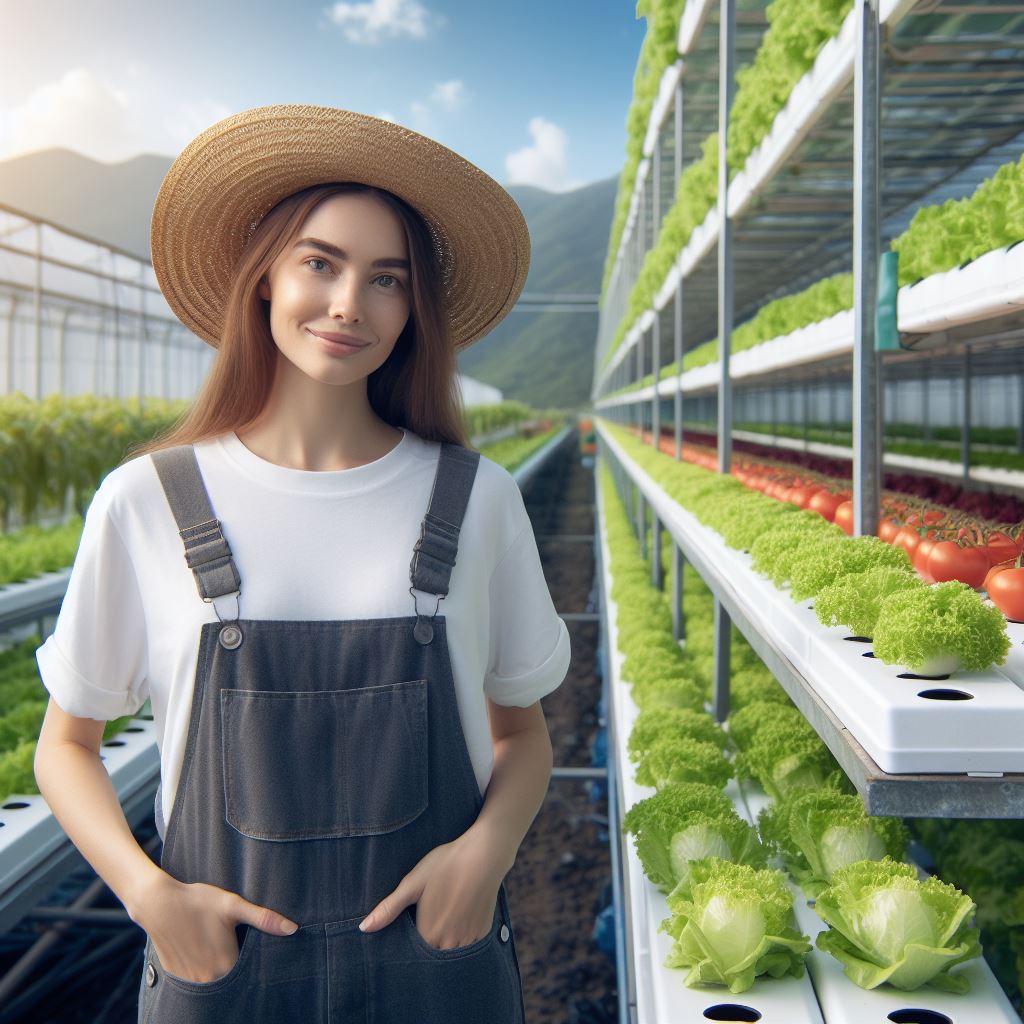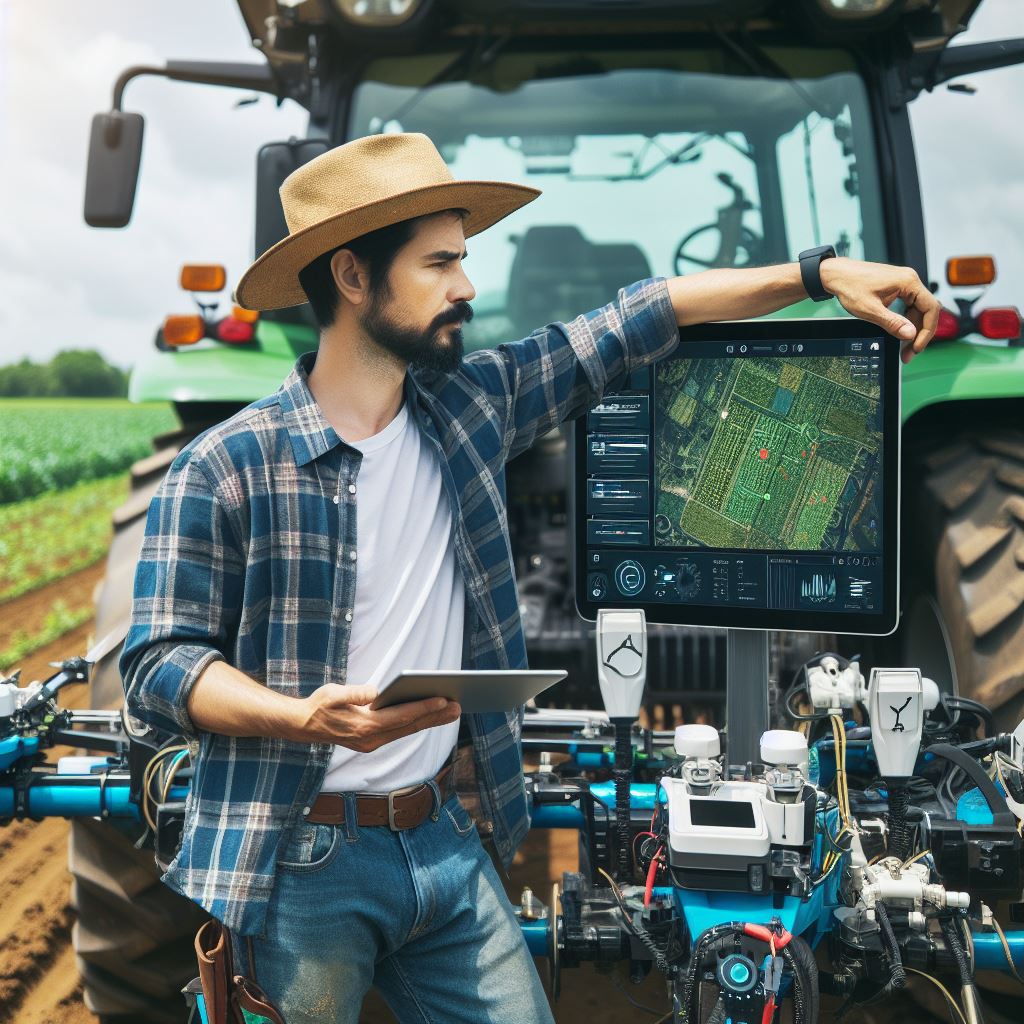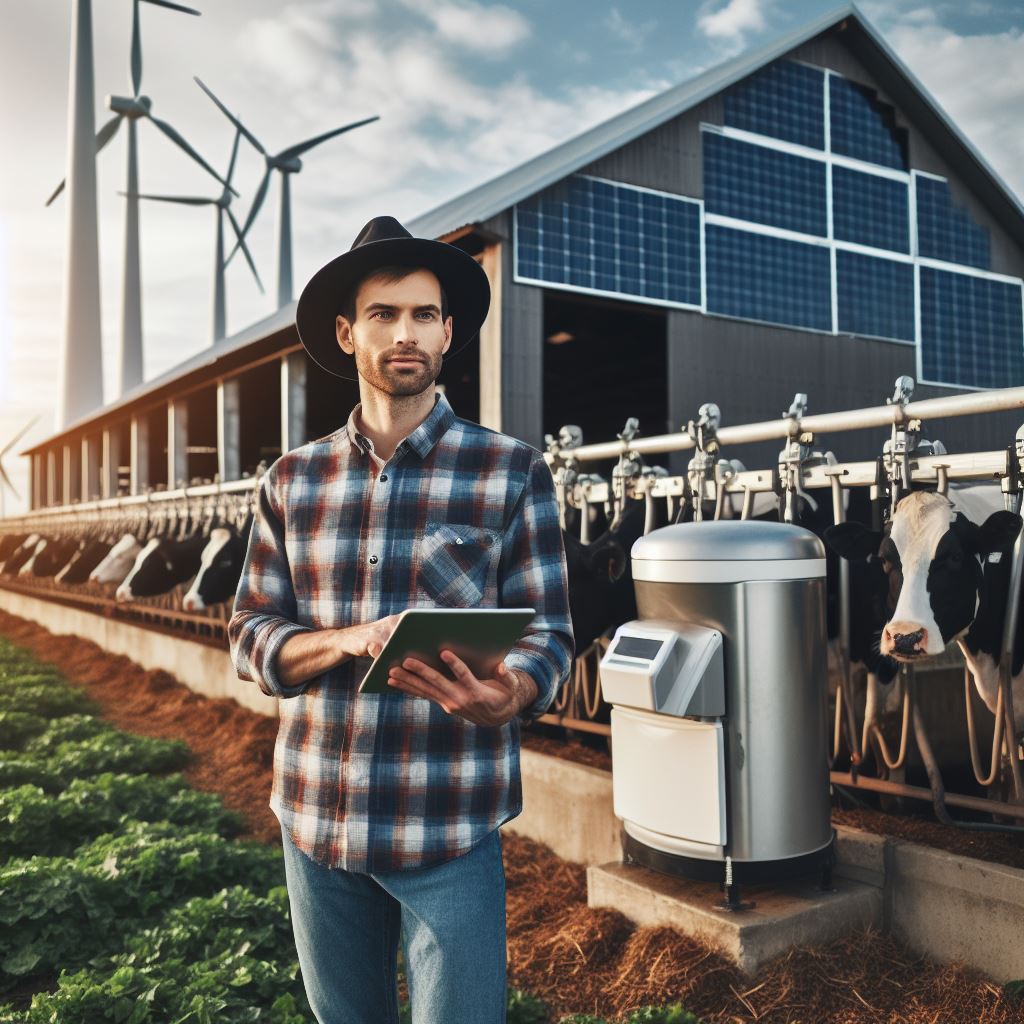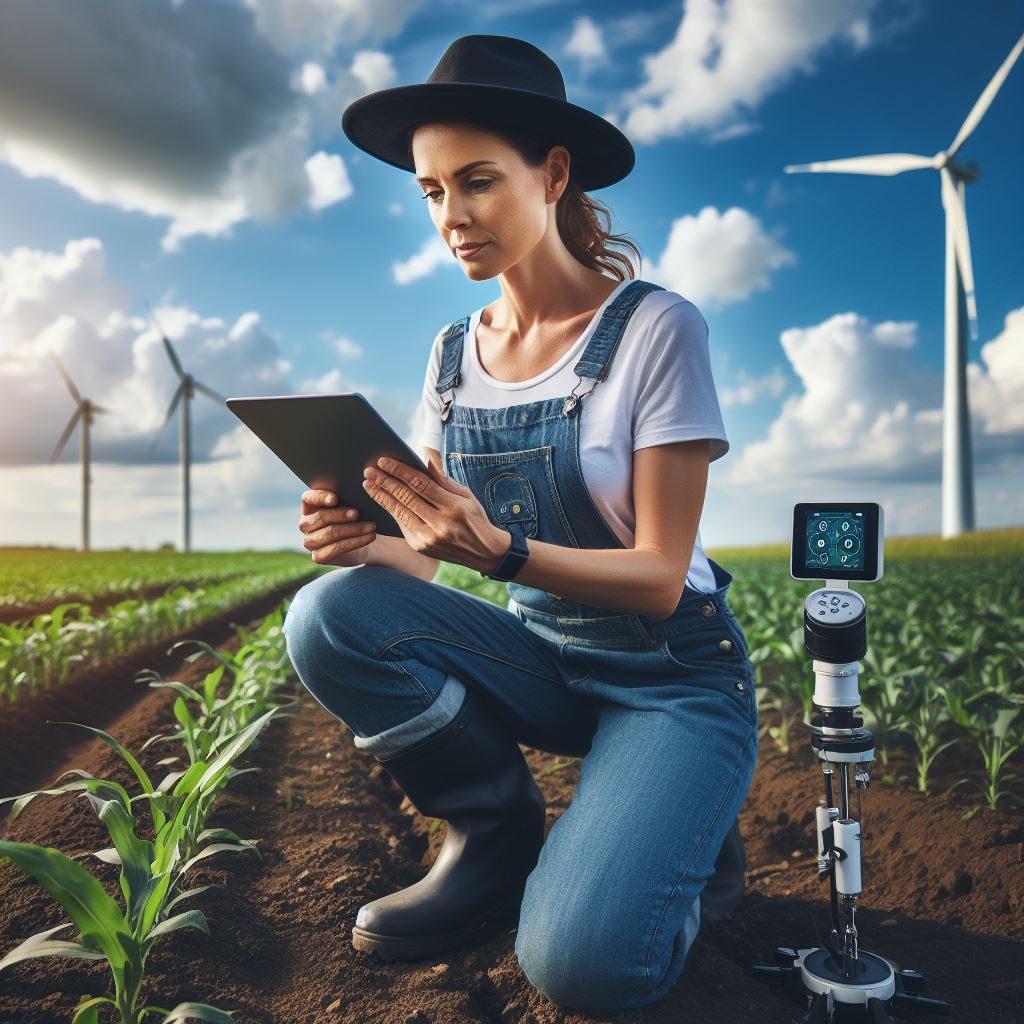Introduction
Vertical farming is a revolutionary concept that involves growing crops in vertically stacked layers.
It addresses the increasing demand for sustainable and efficient methods of food production.
With the world’s population on the rise, traditional farming methods may struggle to meet the growing demand for food.
Vertical farming offers a solution by maximizing land use and minimizing the need for water and pesticides.
This innovative approach utilizes advanced technologies such as hydroponics and LED lighting to create optimal growing conditions.
By growing crops in controlled environments, vertical farming minimizes the effects of unpredictable weather conditions and reduces the risk of crop diseases.
This method also reduces transportation costs and carbon emissions associated with long-distance food distribution.
Vertical farming has the potential to transform urban landscapes by converting abandoned buildings or unused spaces into productive agricultural areas.
It offers an opportunity for local food production, reducing dependence on imported goods and ensuring food security in urban areas.
Moreover, vertical farming enables the cultivation of a wide range of crops throughout the year, including exotic plants that are usually imported.
This not only benefits consumers but also promotes economic growth and job creation in the agricultural industry.
As the world continues to face the challenges of population growth and climate change, vertical farming emerges as a promising solution for sustainable and efficient food production.
Benefits of Vertical Farming
Vertical farming is revolutionizing the way we grow and produce food.
It combines innovative technology with traditional agricultural practices, resulting in numerous benefits that have the potential to change the future of farming.
Utilization of vertical space
One of the most significant advantages of vertical farming is its ability to utilize vertical space efficiently.
Transform Your Agribusiness
Unlock your farm's potential with expert advice tailored to your needs. Get actionable steps that drive real results.
Get StartedTraditional farming methods are limited to horizontal fields, but vertical farming allows crops to be stacked on top of each other, maximizing production in a limited area.
Reduction of land usage
Vertical farming requires significantly less land compared to conventional farming.
By utilizing vertical space and stacking crops vertically, a smaller footprint is needed to grow the same amount of produce.
This reduces the pressure on land resources and opens up possibilities for farming in urban areas.
Elimination of the need for pesticides
Vertical farms are designed in a controlled environment, which enables the elimination of pesticides.
The controlled conditions, such as temperature, humidity, and lighting, reduce the risk of pests, diseases, and weed growth, eliminating the need for harmful chemicals that could enter the food chain.
Protection from extreme weather conditions
With vertical farming, crops are grown indoors, providing protection from extreme weather conditions.
Droughts, floods, and storms can have devastating effects on traditional crops, but vertical farms are shielded from these natural disasters, ensuring a more reliable and stable food supply.
Consistent crop production throughout the year
Vertical farming relies on artificial lighting and climate control, allowing for consistent crop production throughout the year.
Traditional farming methods are dependent on seasonal changes and weather conditions, leading to fluctuating crop yields.
Vertical farming provides a solution to this problem by enabling farmers to grow crops year-round.
Potential for urban food production
Vertical farming has the potential to bring food production closer to urban areas.
By utilizing unused spaces such as rooftops and abandoned buildings, vertical farms can be established in the heart of cities, reducing the distance food needs to travel from farm to table.
This concept promotes sustainable and locally sourced food.
In short, vertical farming offers significant advantages that have the potential to transform the agricultural industry.
By utilizing vertical space, reducing land usage, eliminating pesticides, providing protection from extreme weather conditions, ensuring consistent crop production, and enabling urban food production, vertical farming can revolutionize the way we grow and consume food.
It provides a sustainable solution to the challenges faced by traditional farming methods and opens up opportunities for a more efficient and environmentally friendly approach to food production.
Read: CRISPR Crop Edits: Future of Farming Tech
Technologies in Vertical Farming
Vertical farming is a revolutionary concept that combines technology and tradition to maximize crop yield and minimize resource consumption.
In this section, we will explore the various technologies involved in vertical farming and how they contribute to these goals.
The various technologies involved in vertical farming
Hydroponics
Hydroponic systems allow plants to grow without soil by providing them with nutrient-rich water.
Aeroponics
Aeroponic systems suspend plants in the air, misting their roots with a nutrient solution.
Aquaponics
Aquaponic systems integrate fish farming and hydroponics, creating a symbiotic relationship between fish and plants.
The waste produced by the fish provides nutrients for the plants, and the plants filter the water for the fish.
Showcase Your Farming Business
Publish your professional farming services profile on our blog for a one-time fee of $200 and reach a dedicated audience of farmers and agribusiness owners.
Publish Your ProfileControlled Environment Agriculture (CEA)
CEA involves creating a controlled environment where temperature, humidity, lighting, and other factors can be precisely regulated to optimize plant growth.
These technologies work together to revolutionize agriculture and provide numerous benefits.
Maximizing Crop Yield
Vertical farming technologies contribute to maximizing crop yield in several ways.
- Optimized Space: Vertical farming allows for the stacking of multiple layers of crops, utilizing the vertical space and significantly increasing the yield per square foot.
- Year-Round Harvest: By controlling the environment, vertical farms can ensure a continuous supply of crops throughout the year, regardless of external weather conditions.
- Reduced Pests and Diseases: Indoor environments in vertical farms are highly controlled, minimizing the risk of pests and diseases. This reduces crop losses and improves overall yield.
- Customizable Lighting: LED lights can be tailored to provide the optimal spectrum and intensity for each plant’s growth stage, ensuring efficient photosynthesis and higher crop productivity.
Minimizing Resource Consumption
Vertical farming technologies also play a crucial role in minimizing resource consumption.
- Water Efficiency: Hydroponics and aeroponics use significantly less water compared to traditional soil-based farming, as water is recirculated in closed systems.
- Reduced Land Requirements: Vertical farms can be built in urban areas or repurposed buildings, utilizing previously underutilized spaces and minimizing the need for large land areas.
- Energy Saving: LED lights used in vertical farms are energy-efficient, reducing power consumption compared to traditional agricultural lighting. Moreover, CEA systems utilize smart controls to optimize energy usage.
- Chemical-Free Production: With precise control over the environment, vertical farms can reduce or eliminate the need for chemical pesticides and herbicides, minimizing their impact on the environment and human health.
Vertical farming, with its advanced technologies, offers a sustainable and efficient solution to the world’s food production challenges.
By maximizing crop yield while minimizing resource consumption, it has the potential to revolutionize agriculture and ensure food security for future generations.
Read: AI & Big Data: Farming’s Future
Challenges and Solutions
Vertical farming, despite its numerous benefits, also faces several challenges that need to be addressed.
High initial investment costs
One of the major challenges faced by vertical farming is the high initial investment costs.
Setting up a vertical farm requires substantial capital for the construction of the infrastructure, installation of systems, and purchase of equipment.
However, technological advancements are gradually leading to cost reductions in vertical farming.
As new innovations emerge, the cost of implementing vertical farming systems is expected to decrease, making it more accessible to a wider audience.
Energy requirements
Vertical farms heavily depend on artificial lighting and climate control systems, resulting in high energy consumption.
This poses a challenge as it increases operational costs and environmental impact.
In order to overcome this challenge, the integration of renewable energy sources such as solar panels and wind turbines can significantly reduce the reliance on conventional energy sources.
This not only makes vertical farming more sustainable but also reduces energy costs in the long run.
Developing efficient crop growth methods
A key challenge in vertical farming is developing efficient crop growth methods. Maximizing crop yield while minimizing resource consumption can be a complex task.
Continuous research and innovation in crop growth techniques are essential to overcome this challenge.
Scientists and researchers are constantly experimenting with different approaches, such as hydroponics and aeroponics, to optimize plant growth in vertical farms.
Market acceptance and consumer perceptions
Market acceptance and consumer perceptions can be a significant challenge for vertical farming.
Despite the numerous benefits it offers, many consumers are still unfamiliar with this farming method and may have preconceived notions about its effectiveness and safety.
Education and awareness campaigns play a vital role in promoting vertical farming and addressing consumer perceptions.
By highlighting the advantages, such as reduced pesticide use and increased food security, consumers can be better informed, leading to wider acceptance of vertical farming.
In general, while vertical farming faces various challenges, there are potential solutions that can overcome them.
Technological advancements, integration of renewable energy sources, continuous research and innovation in crop growth techniques, and education and awareness campaigns can collectively contribute to the success of vertical farming.
Read: Tech Trends: AI & Crop Management

Applications of Vertical Farming
In this section, we will highlight the various applications of vertical farming, including providing fresh produce in urban areas, cultivating exotic or out-of-season crops, supporting local food production and reducing transportation, enabling food production in areas with limited arable land, and enhancing food security and self-sufficiency.
The various applications of vertical farming
Providing Fresh Produce in Urban Areas
Vertical farming is ideal for urban areas where access to fresh produce is limited.
By utilizing vertical space, farms can be set up in the heart of cities, providing residents with locally grown, nutritious vegetables and fruits.
Cultivating Exotic or Out-of-Season Crops
With vertical farming, it is possible to create controlled environments that mimic the ideal growing conditions for a wide range of crops.
This allows farmers to grow exotic or out-of-season crops regardless of the local climate or season.
Supporting Local Food Production and Reducing Transportation
Vertical farms can be established in close proximity to urban centers, reducing the need for long-distance transportation of food.
This not only cuts down on carbon emissions but also supports local farmers and stimulates the local economy.
Enabling Food Production in Areas with Limited Arable Land
Vertical farming tackles the issue of limited arable land by utilizing vertical space.
It opens up possibilities for growing food in areas where traditional agriculture is challenging or not feasible, such as deserts or densely populated regions.
Enhancing Food Security and Self-Sufficiency
Vertical farming plays a crucial role in enhancing food security by reducing reliance on imported food and increasing self-sufficiency.
With vertical farms, communities can become more resilient to disruptions in the global food supply chain.
In a nutshell, vertical farming has a range of applications that make it a promising solution for various challenges in agriculture.
It offers fresh produce in urban areas, enables the cultivation of exotic or out-of-season crops, supports local food production, and reduces transportation needs.
Moreover, it facilitates food production in areas with limited arable land and enhances food security and self-sufficiency.
Showcase Your Farming Business
Publish your professional farming services profile on our blog for a one-time fee of $200 and reach a dedicated audience of farmers and agribusiness owners.
Publish Your ProfileAs technology continues to advance, vertical farming holds significant potential for transforming the future of agriculture.
Read: Next-Gen Farming: The Role of Drones
See Related Content: Automation’s Role in Modern Agriculture
Conclusion
Vertical farming presents numerous benefits and vast potential for the agricultural industry.
By utilizing innovative technologies, it bridges the gap between traditional farming methods and modern advancements.
Cultivating crops in controlled environments mitigates climate risks and reduces reliance on land and water.
Additionally, vertical farming maximizes yield and reduces food waste, addressing the issue of global food security.
Optimizing space and automating processes boosts crop yield in urban settings, bridging the gap between consumers and fresh, nutritious produce.
Moreover, it helps to minimize the carbon footprint associated with traditional farming practices by reducing transportation and pesticide usage.
However, it is vital to continue researching and developing vertical farming techniques to unlock its full potential.
This includes exploring sustainable energy solutions, optimizing resource usage, and improving crop varieties suitable for vertical systems.
Further advancements can enhance productivity, scalability, and cost-effectiveness, making vertical farming a viable solution for feeding a growing population.
Vertical farming represents an innovative and sustainable approach to agriculture. It not only improves food production but also reduces environmental impact.
By embracing vertical farming, we have the opportunity to revolutionize the way we cultivate crops and address the challenges of the future.




